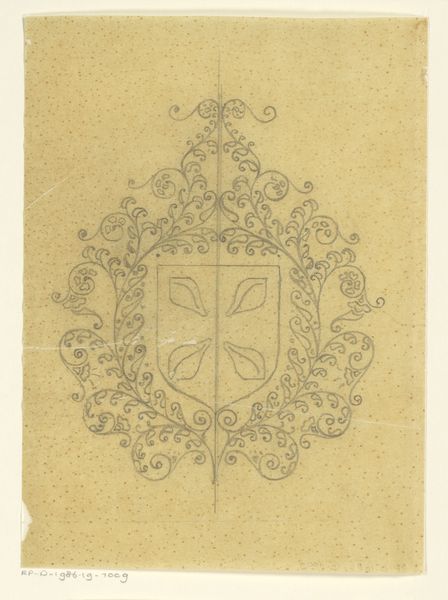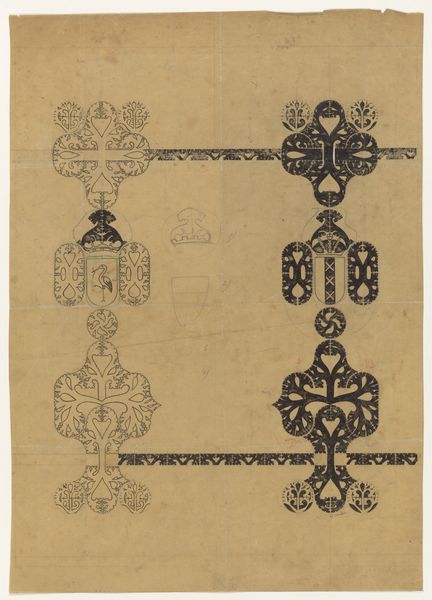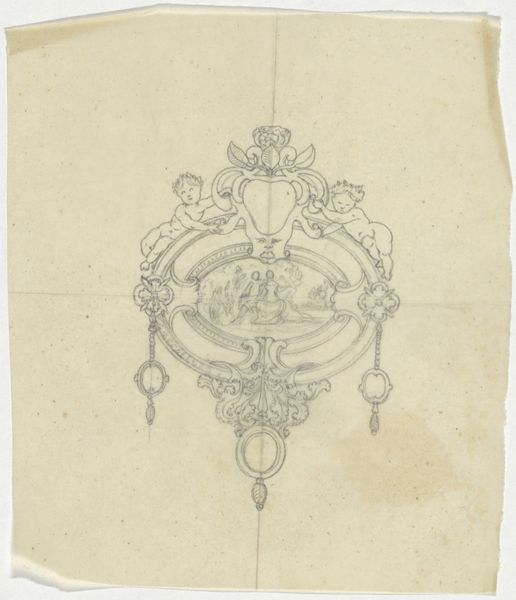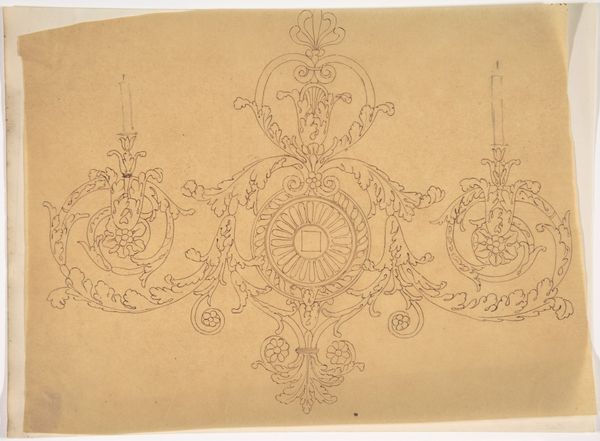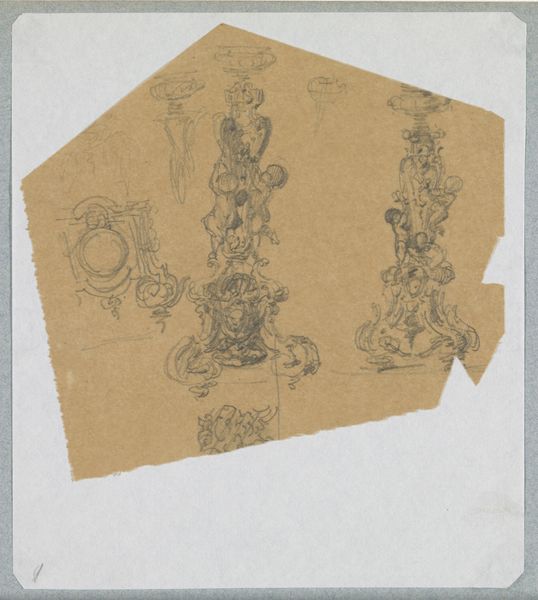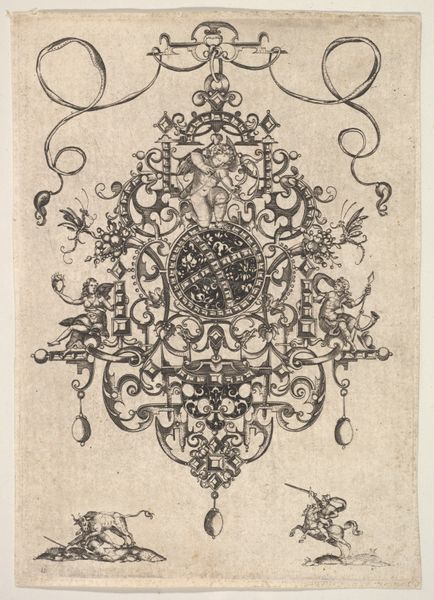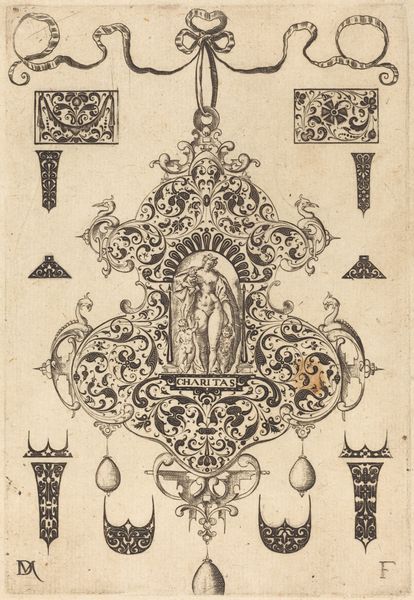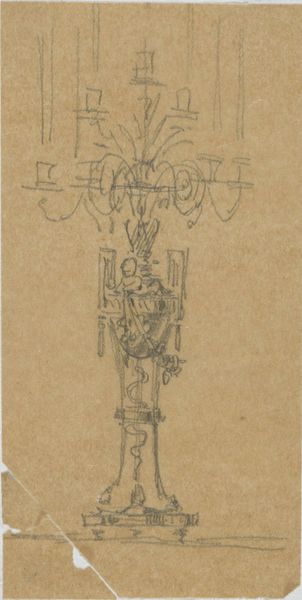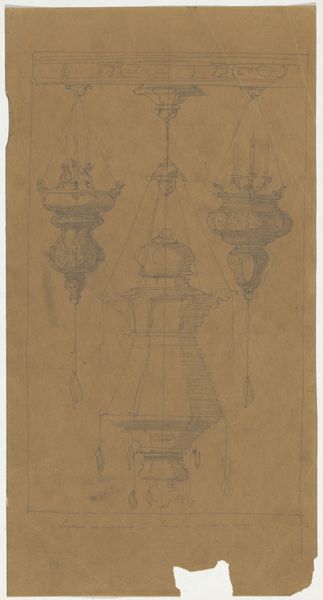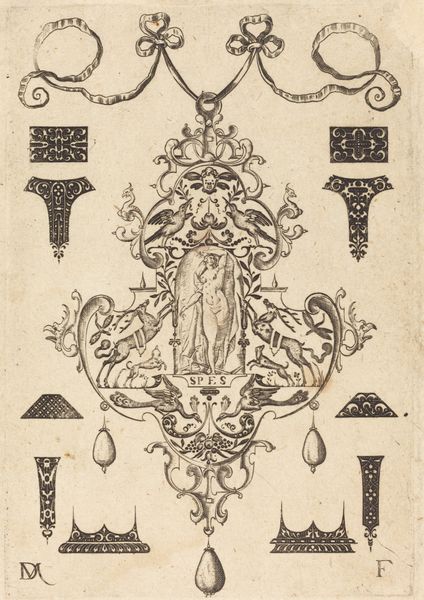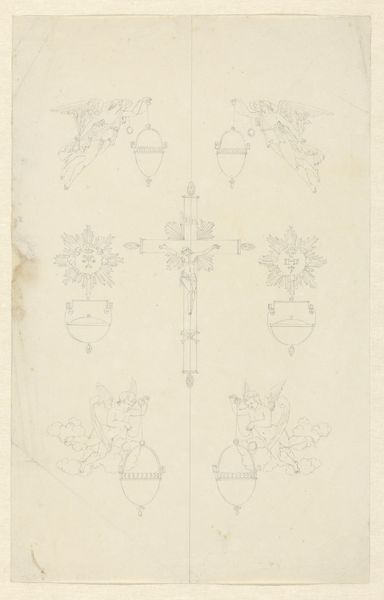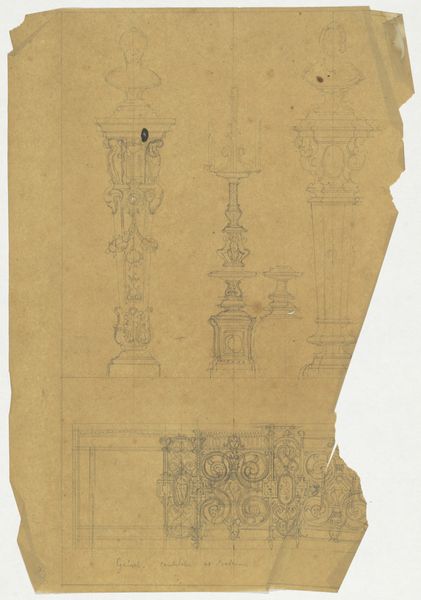
drawing, pencil
#
drawing
#
11_renaissance
#
pencil
Dimensions: height 144 mm, width 95 mm
Copyright: Rijks Museum: Open Domain
Curator: Before us, we have Henri Cameré’s “Design for a Renaissance Style Pendant,” likely created between 1864 and 1894. It’s a pencil drawing that offers a glimpse into jewelry design of the period. What's your immediate take on it? Editor: My eye is drawn to the intricate details – those looping lines and tiny figures! It has such a delicate feel, almost ethereal. The precision with such simple materials, it speaks volumes about the skill involved. Curator: Absolutely. The Renaissance revival was strong then, wasn't it? Consider the political and social climate of the late 19th century—the rise of industrialism, the desire for ornamentation as a statement against mass production. This design offered a connection to an imagined glorious past. Editor: I’m intrigued by the paper itself, that aged, warm tone really highlights the pencil strokes. It forces you to consider the artist's hand, the labor that goes into such a detailed design. What sort of patron might commission such an elaborate piece, what class distinctions were on display? Curator: Precisely. The patron likely belonged to the upper echelons of society, desiring to display wealth and cultural awareness. Jewelry like this served as wearable art, solidifying social status in a very public way. There’s an inherent connection to the societal roles that the commissioners fulfilled through it. Editor: And it goes beyond simple display. The craftsmanship itself has value. The piece showcases highly refined goldsmithing, with delicate settings. It shows the transformation of raw material through skillful labor into a product designed for beauty. Were these types of jewelry also statements of allegiance or identity beyond their financial value? Curator: Yes, quite possibly. Specific Renaissance motifs held symbolic meaning for educated elites of that period— references to classical literature or philosophical concepts were common, signifying education, taste, and membership in exclusive circles. A jewel of this kind goes beyond personal adornment—it speaks to the intellectual and cultural environment of its intended audience. Editor: This reminds us how objects carry a history far beyond their aesthetic appeal. The designer's vision, the craftsman's skill, and the commissioner's intent all converge in a small object, rich with layers of socio-economic implications. Curator: I agree. Seeing this design gives us a remarkable insight into both artistic practices and social hierarchies of the time. Editor: Indeed. It allows us to examine both the surface-level opulence and the deeper currents of craftsmanship, materials, and labor that gave it form.
Comments
rijksmuseum about 2 years ago
⋮
This pencil drawing recalls the multicoloured enamelled pendants from the 16th century. Enamelwork had long been out of fashion, but new life was breathed into this technique for jewellery in neo-styles. Although this design is clearly based on earlier examples, the drawing is characterized by a gracefulness and elegance typical of the second half of the 19th century.
Join the conversation
Join millions of artists and users on Artera today and experience the ultimate creative platform.
